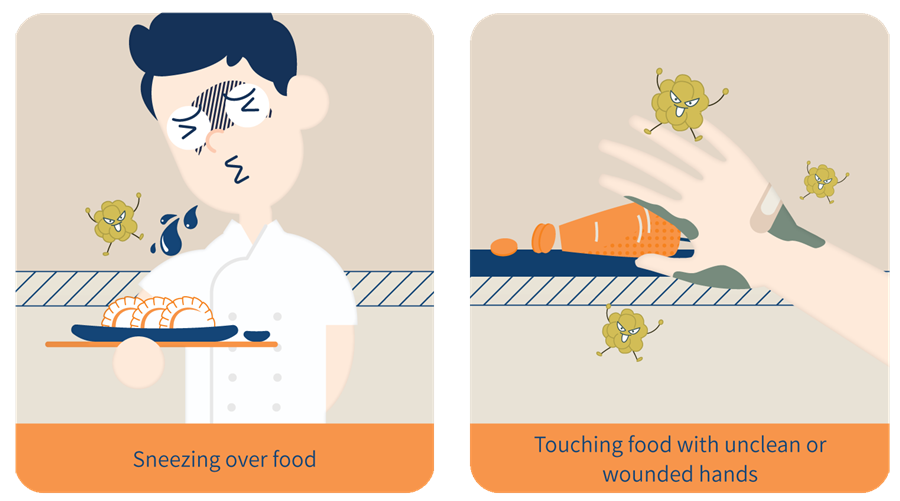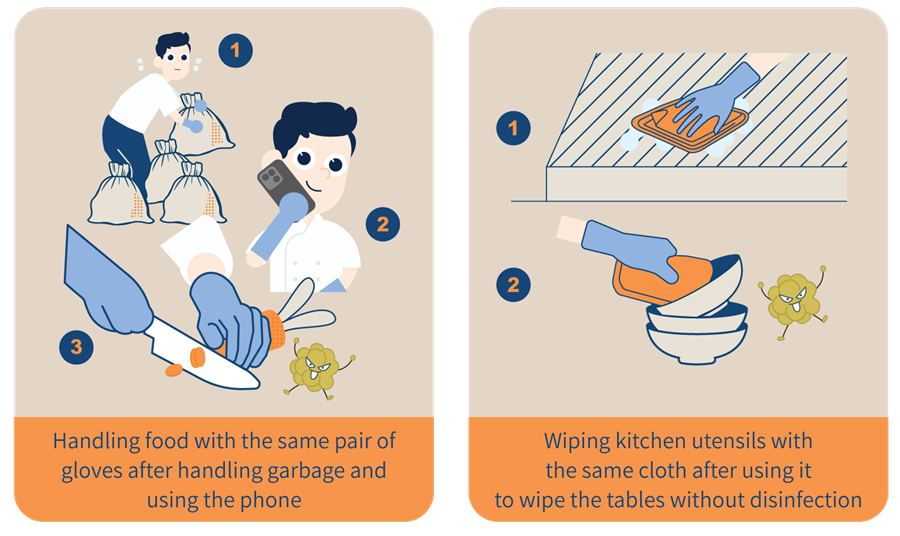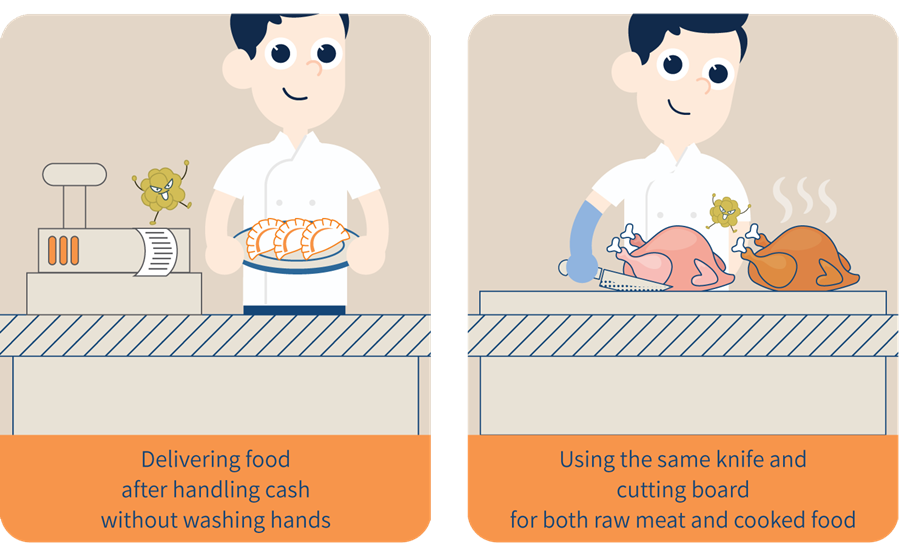Food hazards
There are three types of hazards that pose a threat to public health: physical, chemical and biological.
| Hazards | Examples | |
| Physical hazards | Associated with the presence of foreign objects |
|
| Chemical hazards | Occur when chemicals are present in food at levels that can be hazardous to humans. |
|
| Biological hazards | The main hazards are microorganisms. |
|
 |
To prevent foreign objects from falling into food, you can:
|
For more about food allergens, please click here.
Food contamination
There are three types of food contamination: primary, direct and cross-contamination.
1. Primary contamination
Occurs in primary food production processes such as harvest, slaughter, collecting, milking and fishing. An example is:
- The contamination of eggs by a hen' s faeces.
2. Direct contamination
The contaminants affect the food when the person handles it with direct contact. This is the most common type of contamination. Some examples are:
-
Sneezing over food
-
Touching food with unclean or wounded hands

3. Cross-contamination
The contamination is caused by the transference of a hazard present in a food to another food which is safe via the surfaces of utensils that have contact with both without requisite cleaning and disinfection. Some examples are:
-
Handling food with the same pair of gloves after handling garbage and using the phone
-
Wiping kitchen utensils with the same cloth after using it to wipe the tables without disinfection

-
Delivering food after handling cash without washing hands
-
Using the same knife and cutting board for both raw meat and cooked food
